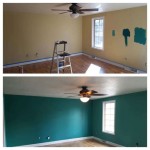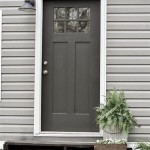When it comes to insulating your walls, the R-value of your insulation is an important factor to consider. R-value is a measure of thermal resistance, which determines how well your insulation will resist heat transfer. The higher the R-value, the better the insulation will be at keeping your home warm in winter and cool in summer. So what is the best R-value insulation for interior walls?
Types of Insulation
The type of insulation you use will depend on the size of your walls and the climate where you live. Common types of insulation include:
- Fiberglass Batt – Fiberglass batt insulation is the most common type of insulation used in interior walls. It is made of tiny glass fibers and comes in pre-cut sheets. It is easy to install and provides good insulation value.
- Cellulose – Cellulose insulation is made from recycled paper products and is treated with a flame-retardant chemical. It is more fire-resistant than fiberglass and provides better soundproofing.
- Spray Foam – Spray foam insulation is a liquid that expands and hardens when applied. It provides excellent insulation value and is great for sealing air leaks in hard to reach places.
- Rigid Foam Board – Rigid foam board insulation is made from a foam core with a metal or plastic covering. It is easy to install and provides a higher R-value than fiberglass batt insulation.
Recommended R-Values for Interior Walls
The recommended R-value for walls depends on the climate where you live. Generally, the higher the R-value, the better the insulation will be. The table below shows the recommended R-values for interior walls in different climates.
| Climate | Recommended R-Value |
|---|---|
| Hot/Humid | R-19 to R-21 |
| Mixed/Humid | R-15 to R-18 |
| Mixed/Dry | R-13 to R-15 |
| Cold/Dry | R-19 to R-21 |
Conclusion
When it comes to insulating your walls, the R-value of your insulation is an important factor to consider. Different types of insulation have different R-values, so it’s important to choose the right type for your climate. The recommended R-values for interior walls range from R-13 to R-21, depending on the climate where you live.















Related Posts








